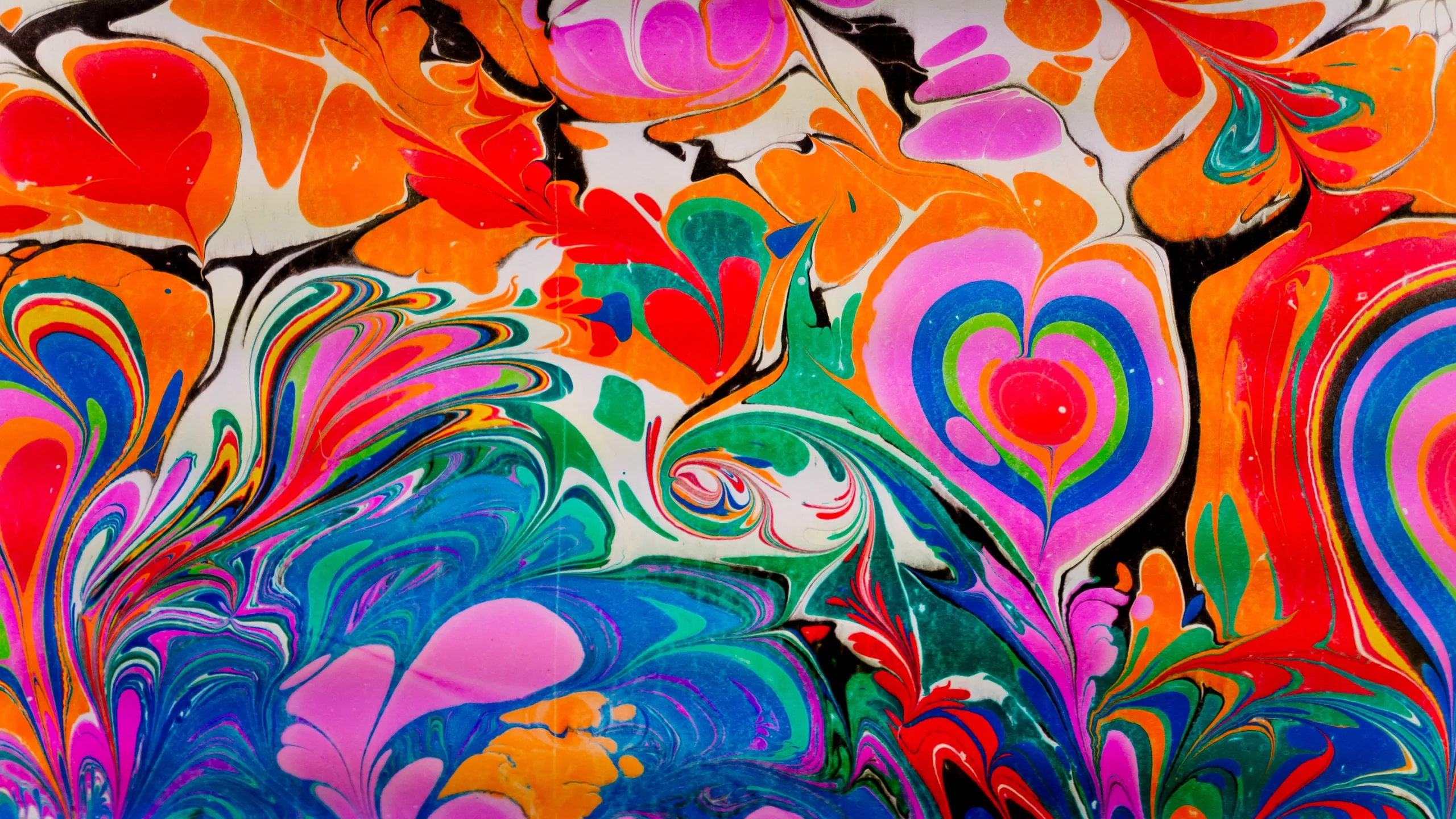Psychedelics can cause mystical experiences. New research is uncovering how they can help treat mental health disorders. Image credit: Raimond Klavins, via Unsplash.
Psychedelic research has a tumultuous history. Records dating back thousands of years describe people using hallucinogens (hallucination-causing chemicals) in various religious and healing practices, including the substance Soma in ancient India and hallucinogenic brews in Athens. Others, like the extracts from the Iboga in West Africa and the San Pedro cactus in the Andes, are still used today for ceremonial and traditional healing purposes. Yet, despite their historical use, we know little about their medicinal benefits. Why?
To answer this question, we first need to consider what a psychedelic is. Classical psychedelics are defined as hallucinogenic compounds working at the 5-HT2A receptor. This is one of the sites by which serotonin acts on the brain, and the binding of psychedelics causes disruption to this system leading to hallucinogenic effects. While ketamine and MDMA aren’t considered classical psychedelics and act via different systems and receptors, they can have a similar effect on the mental state. They cause hallucinations, which are abnormal perceptions, such as feeling like you are shrinking or seeing a field of flowers in the normally boring bathroom rug.
Higher concentrations of classical psychedelics can cause mystical experiences, ego dissolution (loss of self-identity), and a sense of worldly interconnectedness. Fundamentally, psychedelics change one’s experience of the world. While many psychedelics are naturally occurring, it was the advent of synthetic psychedelics which piqued scientific interest. And then, just as quickly, shut it down.
The rise and fall of psychedelic research
The psychoactive properties of LSD (a synthetic psychedelic) were discovered in the late 1930s, and the next decade saw a crescendo of research exploring psychiatry. These drugs were viewed as potential therapeutic breakthroughs for various serious mental health disorders such as schizophrenia, depression and substance abuse.
But with the 1960s came the fall of psychedelic drug research. Legislation was passed to ban the possession and use of LSD and other hallucinogens under the justification of protecting people from adverse drug effects. This was in direct contradiction with their known health impacts, leading some to consider the ban a political reflex to the threat posed by the “counterculture movement” with the accompanying anti-war, pro-minority rights and pro-environmental views. Regardless, the illicit distribution of LSD and portrayals of its abuse in popular culture eventually led to regulations that halted medical research into the properties of psychedelics.
Under the UK’s Misuse of Drugs Regulations (2001), traditional psychedelics are currently considered ‘Schedule 1’, meaning they are considered to have no medicinal value and so cannot be lawfully possessed or prescribed. This also places restrictions on therapeutic research. Research on Schedule 1 drugs is technically permitted, but securing approval is challenging and until recently brought a lot of stigma from the scientific community.
Recently, their use in research has been revived, re-introducing psychedelic therapies for a variety of mental health disorders. This has stirred both scientific and public opinion. Personally, I believe this research could not have come soon enough as the development of mental health treatment has largely stagnated in the face of our mental health epidemic. One in four people in the UK experience a mental health problem each year, and these numbers are only increasing. We previously experienced a pharmacological revolution in psychiatric treatments, and this undeniably saved lives. But current antidepressants do not work for everyone. They can also have a huge impact on the body, as is made evident in cases of antidepressant discontinuation syndrome. We need new approaches to manage this looming health crisis.
Current antidepressants do not work for everyone. We need new approaches to manage a looming health crisis.
Psychedelics are receiving a lot of attention at the moment as a revolutionary treatment. As more clinical trials run their course, we will need to re-evaluate how these drugs are perceived socially so that patients are able to seek treatments without fear of stigma. I believe reclassification will be paramount for this, facilitating study to ease public fear.
What does the brain look like on psychedelics?
Contemporary research in the West has finally let us use brain-imaging techniques not available in the 1960s. Functional magnetic resonance imaging (fMRI) allows us to see areas of increased blood flow in the brain, reflecting increased neural activity. One new observation has been an increase in global connectivity under psychedelics, referring to an increase in communication between physically distinct brain regions. Figure bellow shows a representation of this phenomenon, produced from studying psilocybin and also seen for LSD.
Across different psychedelics, a disruption is seen in the ‘default mode network’ (DMN), which is a series of interconnected regions active when you are awake but not engaged in any particular activity. Together these effects can be interpreted as generating an abnormal conscious experience. Psilocybin and ketamine have both been shown to exert changes in synaptic plasticity (changes to the physical connections between neurones), and this has long been heralded as an important mechanism for recovery from disorders like depression.
We are not yet sure if these changes in synaptic plasticity and global connectivity occur separately from the hallucinogenic experience, which can be potentially disturbing to patients. Some are confident that they are indeed distinct, and Lindsay Cameron and colleagues have had early success in the search for therapeutic compounds without psychoactive effects (published in 2021). However, safety concerns, such as seizure risk, have meant that none have yet reached clinical trials. I think we jumped the gun a little here — we need to prioritise research to clarify how psychedelics convey health benefits before sinking money into finding these novel compounds.
Psychedelics on (clinical) trial
So far, we have trialled psychedelics for various conditions, including end-of-life anxiety, addiction, obsessive-compulsive disorder (OCD), schizophrenia, and treatment-resistant depression (TRD). TRD sufferers are those that have depressive symptoms that do not improve with antidepressants or therapy. In these cases, psychedelics seem to provide fast-onset antidepressant effects, whereas traditional drugs see a delay in treatment even in those who respond well.
Esketamine was approved by the US FDA for TRD in 2019 but not recommended in the UK’s guidelines for the NHS released in 2020. Both are controversial decisions. Overall, worries about drug abuse are pervasive in public opinion about ketamine treatment, so we may need to look to alternatives. The largest clinical trial of psilocybin for depression was published last year in The New England Journal of Medicine. TRD patients were given a dose of psilocybin on the administration day and were then followed up with over the following twelve weeks. Before application day, psychotherapists prepared them for the trip, so that they spent it directing their attention inward, while listening to music and wearing eyeshades. At week three, both treatment groups had alleviated depressive symptoms but also a slight increase in suicidal ideation. While it is possible this increase was simply a result of chance, it warrants better safety investigations. Following the success of this trial in demonstrating the drug’s antidepressant effects, the same research body has announced a similar trial of psilocybin for post-traumatic stress disorder (PTSD), another disorder notoriously resistant to treatment.
Psychedelics are beginning to fulfil their promise for therapeutics.
PTSD is an anxiety condition that develops in some people who survive dangerous or distressing events. While normally the initial reactions to trauma dissipate over time, sufferers of PTSD continue to feel such effects and often relive the event in nightmares and flashbacks. It is estimated that a third of people with PTSD are treatment resistant. MDMA, like psilocybin, was proposed as a treatment and found to reduce scores on the clinician-administered PTSD scale. In addition, the treatment did not show abuse potential or increased suicidal ideation. It is a potential breakthrough in an otherwise difficult-to-treat disorder—a key success story for hallucinogens in medicine.
Psychedelics are beginning to fulfil the promise for therapeutics that researchers identified back before the 1950s. Still, there are many challenges yet to face, particularly concerning the practicality of treatments within the NHS’s existing infrastructure. There are also ethical questions. Do we know their potential for harm to vulnerable patients? What might their other unknown long-term effects be? And are patients even able to make informed decisions about treatment under the state of distress that brought them to the clinic? While what applies to psychedelics also applies to other pharmacological approaches, public scepticism has led to a reluctance to treat them in the same way. There’s no doubt that the illegality of psychedelics has made people wary, stirring up fear around these questions. This is why it is time for reclassification.
As we forge a new era of psychedelic research, we can reflect on the history that brought us here. Psychedelics are just one example of an increasing number of stories in popular science that spotlight how often ‘modern medicine’ neglects to assess the value of practices that have stood for generations. With their value as a potential breakthrough treatment in the fight against the looming mental health epidemic, we may ask ourselves what else we may find by looking back in history.





